Category Archives for Composite Decks

Composite Decking: An Environmental Choice
Composite decking materials are made by combining plastic and wood. Where do these ingredients come from? Some environmentally responsible decking material producers use mostly recycled material. This means that while you enjoy a long-lasting, low-maintenance, beautiful and functional outdoor living experience, you also make a minimal impact on the planet.
Of course, it’s nice to think about being ecologically friendly, but you want your deck to last long as well. Composite decking materials have you covered there. They come in a wide variety of colors and grain choices, they can actually be less expensive during their lifetime when compared to other options, and they can last more than a couple of decades with very little maintenance.
Let’s take a closer look at composite decking materials and why they make sense for the Dallas area.
How Much Time, Money and Cleaning Does a Composite Decking Really Cost?
Some people will choose to build a pressure-treated pine decking rather than use composite materials. They love the fact that the initial, installed cost of a pressure-treated deck can be 1/2 to 1/3 the cost of building a composite deck.
What they may not have been told by their deck builder is that they can very easily spend more overall money than if they had gone with a composite material like Trex decking.
Wood decks need to be sanded and painted or stained. Expect annual maintenance and re-staining or painting every 2 to 3 years. You never have to stain or paint a composite deck, not initially nor ever. Over 10 years of maintaining a wooden deck, you can expect to spend about 30 hours each year on average sanding, staining, painting and conducting other normal maintenance tasks.
That number is just 2 to 4 hours each year with your composite deck.
The difference is intense, back bending, elbow grease-powered maintenance with a wood deck and just washing off your composite deck with a hose and some soapy water. Additionally, deck maintenance on a standard sized wooden deck could cost more than $5,000 over 10 years. That includes cleaning, staining or painting, and replacing parts. The same-sized composite deck could cost you as little as $500 in maintenance over that same 10-year period of time.
This is why you can expect to pay less for a composite deck over the lifetime of the product than you will for a wooden deck that requires a lot of maintenance.
How Much of Composite Decking Is Recycled Material?
The Trex company makes beautiful decking products which are 95% recycled plastic and wood. This includes old plastic shopping bags, plastic milk and water bottles, old wooden pallets, sawdust and discarded wood fiber.
Each year, Trex manufacturing methods keep over 500 million pounds of wood and plastic from ending up in landfills around the United States. This also keeps those materials from leaching into the water table and eventually ending up in our lakes, rivers and streams.
Fiberon is another popular composite decking material provider. Their products are nearly 94% recycled content. The top composite deck manufacturers ensure that you are making an environmentally conscious statement when you use their products.
How Long Do Composite Decks Last?
Trex was one of the first companies to introduce composite decking materials. The company stands behind its products, offering a fade or stain warranty for 25 years. That having been said, you can get 30 or even 40 years of consistent use and no-fade performance with a composite deck.
Forget about Splinters, Rotting and Other Wooden Deck Problems
Even the hardiest, most durable wood will eventually rot given enough time. That is not the case with composite decking materials. You don’t have to worry about warping and chipping, fading and staining, rotting and bothersome splinters.
This material is also insect-resistant, so no termites or other burrowing insects from harming the structural integrity of your deck.
If you would rather be spending your time on your deck rather than cleaning it, painting it, staining it and maintaining it, composites are the way to go. They last forever with little to no maintenance, and they cost less per year over their lifetime than wooden decks. Ask Dallas Deck Craft to see some composite decking samples if you want to build a long-lasting and good-looking deck in the Dallas area.
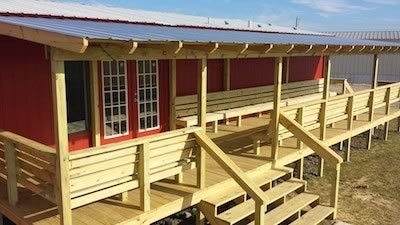
Decking: Pressure-Treated Pine vs. Composite
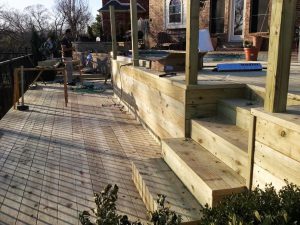
There’s no denying pressure-treated pine is a popular decking material. It feels good under your feet, it’s a natural wood material, and it’s easy to install. Its low cost when compared to alternatives like composites is attractive to a lot of homeowners. For these reasons some people choose pressure-treated pine versus composite decking materials.
Then there’s the flipside of the coin. There are plenty of reasons to build a composite deck. PT lumber needs to be stained and sealed. You need to stain it again every 2 to 3 years. There is a good deal of annual maintenance that is not needed with composite decking materials. A composite deck can last 20 or more years, twice as long or longer than a pressure-treated deck.
Finally, composite decks hold their appearance over time. You can expect some discoloration or fading with a pressure-treated deck, especially if you fall behind on maintenance.
So, should you choose composite decking materials or pressure-treated lumber? Let’s take a deeper dive and see which makes sense for you.
What You Need to Know about Pressure-Treated Pine
The number one draw for pressure-treated pine as a decking material is low-cost. Pine trees are plentiful in North America. The largest lumber companies that harvest southern yellow pine can do so at a lower cost than woods like cedar and certainly redwood.
Pine is strong but also easy to work with. It’s not the strongest wood or the hardest by any means, but it is more than sufficient to make for a great decking material.
There is also the fact that this is real wood. It looks like wood because it is! You get a natural wood grain and feel. Build a pressure-treated deck and you are adding a slice of mother nature to your backyard.
Because this wood has to be stained and sealed, you can choose whatever color matches your home. There are literally hundreds of stain colors to choose from at your local big box store. This is another benefit of choosing pressure-treated pine over composite decking materials.
Composites definitely come in a wide variety of colors and shades. However, you may be limited to just two or three dozen choices. Head to your local big box store and ask to see the selection of stain colors for pressure-treated pine. You will see that you can choose from several hundred instead of a few dozen.
Long-Term Cost Vs. Upfront Cost
Sometimes homeowners don’t think about the long-term cost of maintaining a pressure-treated deck. After several years you may be needing to replace balusters, deck boards and other components. Even if this is not the case, there’s the cost of staining your deck every two or three years. If you don’t, then it can give into the tough Dallas weather over time.
There’s no denying your upfront cost of building a pressure-treated deck is a lot less than if you choose composite materials. Even so, a pressure-treated deck can cost more money in maintenance per year plus initial cost in its lifetime than a composite deck. If your budget doesn’t allow for the greater upfront cost of composite, then pressure-treated pine is the way to go. Remember that you will have to budget more money annually over the lifetime of a PT deck than when you maintain a composite deck.
To Clean or Not to Clean?
You should scrub your pressure-treated deck at least two or three times a year. Yes, I said scrub. This means either getting down on your hands and knees with a hand brush or using a long-handled scrub brush. You can use a retail store deck cleansing solution or just some warm, soapy water.
If you don’t like the idea of spending your free time cleaning your deck, keep this in mind. Some homeowners understand regular maintenance is a part of keeping up their home value. They don’t mind committing to the regular maintenance a pressure-treated deck requires.
How Long Can You Expect a Pressure-Treated Deck to Last?
Your PT deck should give you 8 to 12 years of functional use. This number varies according to a lot of factors, the most important factor being maintenance. I know it sounds like we are beating a dead horse here, but you have to commit to regular maintenance with a pressure-treated deck.
If not, it simply is not going to withstand what can be a difficult weather environment here in Dallas. That having been said, if you are a stickler about cleaning and maintenance as well as staining every 2 to 3 years, you could get as many as 14 or 15 years out of a pressure-treated deck.
However, any natural wood (even pressure-treated pine) can rot, splinter and warp. Staining and sealing your deck regularly can delay this natural damage but it will eventually occur. This can lead to replacement costs after your deck is several years old.
Screw Heads or No Screw Heads?
Have you ever seen a pressure-treated deck? You no doubt noticed the hundreds or thousands of screw heads. Pressure-treated lumber is so easy to work with that it just requires inexpensive screws to fasten it together. This keeps the cost down. It also means you can have a quality deck built in a few days possibly even in one day.
If you would like a pressure-treated deck with a hidden fastening system, that is sometimes possible. There are fastening systems which have been made to work with pressure-treated pine and other natural woods. However, this drives up the cost of your deck. It puts you in kind of a catch-22 situation.
If you are choosing pressure-treated pine as your decking material, you might be doing so because the low cost is so attractive. Then if you start talking about a hidden fastening system, that cost goes up. Some people don’t care that screw heads are visible throughout a pressure-treated pine deck.
A quality contractor will make sure the heads are sunk below the level of your wood and don’t cause any injury risks. However, some homeowners want a smooth and polished look. You can get that with composite decking materials. If the presence of a few screw heads doesn’t make a difference to you one way or another, this is a non-issue. If you want a clean and smooth appearance without the presence of screw heads or any other fastening system, consider composite decking materials.
The Pros and Cons of Composite Decking Materials
Cost is always a factor when a homeowner thinks about some home improvement project. It is the rare homeowner who has deep enough pockets not to be worried about how much something will cost. One of your major considerations when building a deck has to do with money.
There are upfront costs and ongoing maintenance and replacement costs. As you’ve noticed in this report, these costs can vary greatly depending on the type of decking material you choose.
Comparing Maintenance Costs
A veteran deck builder with a lot of decks under his belt can tell you the real cost of any type of decking material. In the case of pressure-treated pine vs. composite decking, there is a vast difference in maintenance and upkeep costs.
A large pressure-treated deck will set you back about $5,000 over 10 to 12 years. That’s how much you’re going to have to spend to buy sandpaper, stain and sealers, paintbrushes, scrub brushes, tarps and other necessary items and accessories. This includes having to replace physical components like decking boards and rails that have rotted, split, warp or cracked.
Your maintenance cost for the very same sized composite deck is only going to be about $500. That is a huge difference. You never have to worry about replacing spindles, boards and rails on a composite deck. This is a very real consideration as a replacement cost on a pressure-treated pine deck.
What Does Maintenance Look like with a Composite Deck?
The Fiberon composite decking company says it takes anywhere from 16 to 32 hours of maintenance on a wooden deck to keep it looking good every year. Compare that to just 2 to 4 hours per year with a composite deck.
The intensity of that annual maintenance is important to note as well. You can clean off a composite deck with a leaf blower or broom, or spray it off with a garden hose. At least two or three times a year a pressure-treated deck will require some scrubbing and elbow grease.
The construction of composite decking materials keeps them looking brand-new for 20 or 25 or more years. You have to do virtually nothing at all as far as maintenance goes. You should always remove wet leaves or natural debris from your deck as soon as it accumulates.
Aside from that, and spraying off your deck or sweeping it off, composite materials don’t really require you to do very much at all for them to look beautiful and last a long time.
Composite Decking Materials Look Great… No Screw Heads Either
Composite decking has come a long way. It used to be that the earliest composite decking boards didn’t look like wood. That is no longer the case. You can choose from dozens of colors and grain configurations that look like mother nature. The upside is that they don’t wear like mother nature. They are virtually maintenance free and can last 20 or 25 years or longer. There is also the fact that composite decking holds its appearance over time. It won’t fade or discolor like natural woods can.
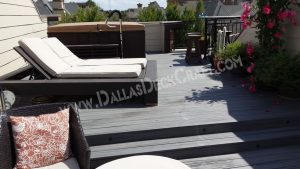
Are you looking for a consistent appearance? No two natural wood boards look alike, either in color or grain pattern. You can get a pleasing and consistent look with composite decking materials. The grain configurations and colors of the boards are the same from one board to the next.
By the way, you don’t have to worry about staring at screw heads. There are hidden fastening systems made for composite decking materials so you get a clean and smooth, fastener-free appearance. This also means you won’t have any screw heads working their way above the surface of the wood and causing a safety risk like you can have happen with a pressure-treated pine deck.
Pressure-Treated Pine vs. Composite Decking Materials – The Wrap-Up
Are you building a deck on a tight budget? Pressure-treated pine might be the way you need to go. It definitely costs a lot less upfront than if you were to build a deck with composite materials. Just remember that it’s easy to promise you are going to do all the maintenance that is required to keep a PT deck looking good.
It might be a different story when those maintenance tasks roll around.
That’s the beauty of a composite deck. You don’t really have to do anything other than brush it off and hose it down every now and then. Composite materials keep their appearance for 20 or more years. A pressure-treated deck can look great for its 10 to 12 year lifetime, it just requires a little more elbow grease than a composite deck does.
You are definitely going to have to pay more to build a deck with composite materials on the front end. However, maintenance and replacement costs are next to nothing every year when compared to what you have to do to keep a pressure-treated deck functional and good looking. There are a lot of benefits to either choice.
Whether you choose composite decking materials or pressure-treated lumber, you get to create great memories with your friends and family. You get out of the house and into the beautiful weather Dallas has to offer. Either type of deck provides you with a refuge after a long, hard work week or at the end of the day.
Give us a call and get your questions answered. We will give you unbiased information regarding pressure-treated lumber and composite decking materials. As we just discussed, there are pros and cons of both types of decks. Set up a time when we can come to your home and give you a free estimate. We’ll take a look at your particular situation and have a conversation about what you expect from your deck. That can help you decide what material you’re going to choose and we can get started building the outdoor deck of your dreams.
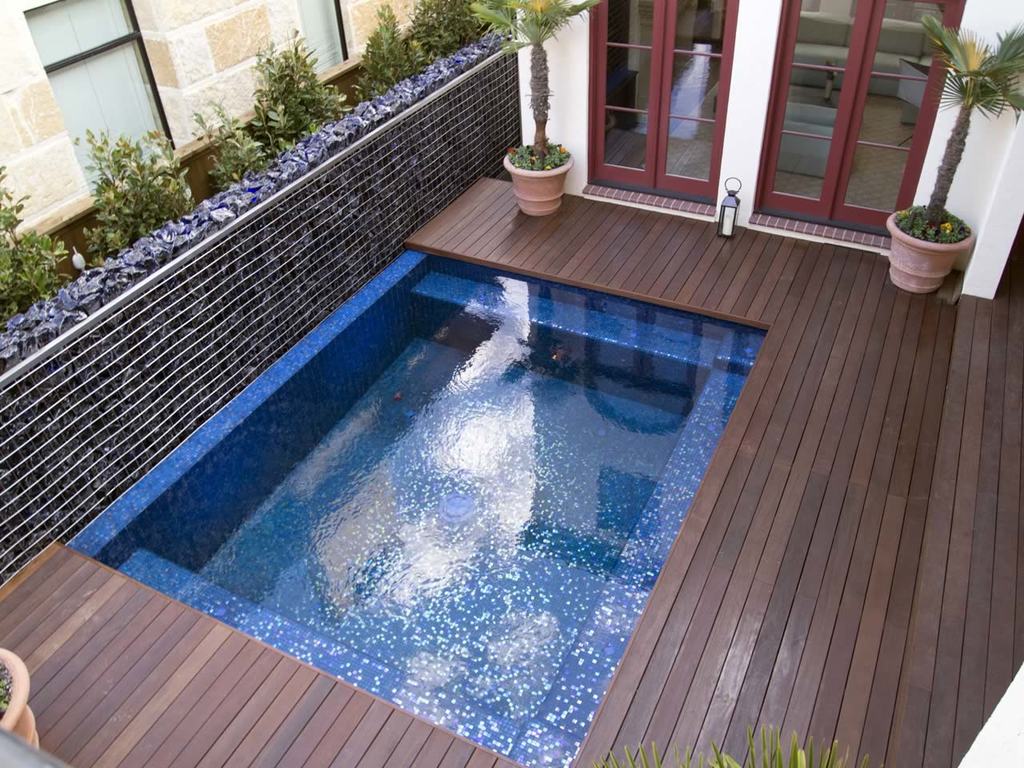
Ipe vs Trex Decking Comparison Guide
So you are considering a new deck but not sure if you should go with ipe or Trex? In this article we will point out the qualities and differences so that it can help with your decision. When comparing ipe against Trex decking, cost may be the first thing that comes to mind. Even if you have a large budget you don’t want to overpay for your deck. Good looks is certainly a consideration, and durability comes into question as well. Of course, you should understand maintenance responsibilities and costs for your deck project, and remember that cost is not just an upfront issue. There may be financial costs attached to long-term maintenance.
While you certainly want to consider all of these factors, there is a big question you should answer first before you weigh the pros and cons of ipe (pronounced EE-pay) and Trex decks. Regardless of your budget, the size of the deck you are looking for and any other aspect of this project, you need to ask yourself the following question.
How Will You Be Using Your Deck?
Are you looking to build a pool deck? Choosing the right type of decking material can help you provide a slip-free surface that keeps your swimming friends and family members safe. Bare feet are synonymous with a swimming pool experience, so you want to select a type of wood or composite that doesn’t get too hot in the blazing sun.
Perhaps you are building a deck as a retreat. You want a place you can go to get away from the hustle and bustle of your busy life. Maybe you enjoy entertaining. You love playing the host, and you want to design a decking area where you can create great memories with your loved ones. Of course, if you fancy yourself a 5-star outdoor chef, you can use your deck to display your backyard grilling skills.
Think long and hard about what experience you want your deck to provide for you. Once you know the physical and emotional needs you expect your outdoor deck to give you, you can move on to other ipe versus Trex considerations.
For instance, Trex can get hotter to the touch than ipe, so it might not be the best choice for a pool surround. On the other hand, Trex can be a little less expensive upfront than ipe and it is available in colors not found in natural woods. To continue your decking comparison, let’s talk money.
Ipe vs Trex Cost, Now and Down the Road
Whatever type of deck you build, it is going to require maintenance. You have an upfront cost for construction that includes parts and labor. Once your dream deck is created it may be a beauty to behold, but that beauty depends on you if it is going to last. This means that even with the most durable, weather-resistant, hands-off deck is going to come with maintenance considerations.
Maintenance means money. Cleaning products and stains have financial costs, and so does elbow grease. If you are going to be the one maintaining your beautiful deck, you have to consider how much your time is worth. This means knowing what you should expect as an upfront construction cost. Average annual maintenance cost is also important before you decide on ipe over Trex, or vice versa.
Ipe is a “real wood” created by Mother Nature and it is incredibly dense. If you prefer to let it patina to a beautiful gray then it doesn’t have to be stained or sealed. Have you ever seen teak wood used on a boat? It will also weather out if not oiled.

Newly installed, raw ipe.

Ipe after 6-8 months with no oil.

Ipe after 15-20 years with no oil.
On the other hand if you would like to retain the beautiful natural colors then you would need to have it oiled on an annual basis. Ipe is so tightly constructed by nature that stains, sealers and oil cannot penetrate past the outer layer of the wood very well.
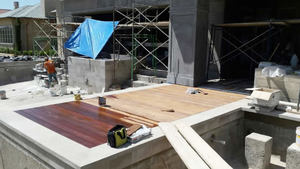
Newly installed ipe deck with oil being applied.
Your initial cost for ipe decking materials will most likely be higher than those of Trex products. This is in part because it is imported from Central and South America. Also there is only so much ipe in the world. It has to be grown and responsibly harvested.

Trex is a manufactured product that combines recycled plastic and wood. This makes it a little less expensive. Composite decking materials are not as strong as ipe (aka ironwood), so it requires a little more attention to the framework when installing.
On an annual maintenance basis, a 12′ x 20′ ipe deck may carry an average annual maintenance cost of $480 for cleaning and oiling, while the same size Trex deck can set you back $240 or more per year on average for cleaning cost.
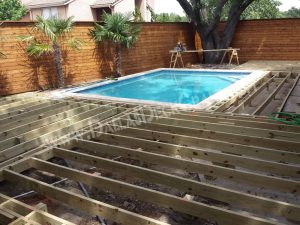
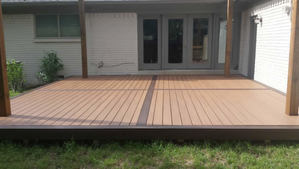
Ipe vs Trex Durability: How Long do You Want Your Deck to Last?
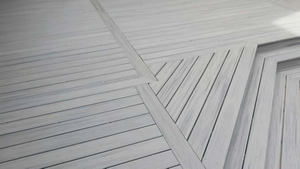
Ipe is a natural hardwood that is found mainly in Brazil. Trex is a composite decking material made from mostly recycled wood and plastic. Incidentally, Trex is also the name of the company that manufactures this decking product. Due to their physical makeup, ipe and Trex respond differently to Father Time, exposure to sunlight and other factors.
Ipe lasts forever. Not really, but it sure seems that way. Ipe decking has been used at Disneyworld and on the Atlantic City Boardwalk in New Jersey because it lasts so long. Its low-maintenance, high-density resistance to pounding feet and weather compared to other deck types is why you can expect 25 to 50 years of longevity on most ipe products. Some ipe decks can last 50 to 75 years or longer when they are taken care of.
That’s right… your ipe deck may outlive you!
This is not to say that Trex materials don’t last. They certainly do. Trex backs their decking products with a 25 year warranty. If you take care of your Trex deck, you can expect it to look great and provide wonderful memories for 25 to 30 years.
What the Heck is the Janka Hardness Scale?
Comparing ipe vs Trex means understanding how hard they are. The oddly named Janka scale measures how hard different natural woods are. Named after Austrian Gabriel Janka, it is often used to compare how hard decking materials are, thereby giving you an idea of how resistant they are to wear and weather.
The Janka hardness rating for ipe is 3,680, which is 8 times harder than that of a California redwood tree. Trex decking materials are not nearly as hard as ipe. This does not mean they aren’t durable, as is evidenced by the accompanying 25 year warranty. Trex does not carry a Janka rating, but it should be fine for your backyard deck.
You want to choose a hardness level like that of ipe or some other dense hardwood if you are going to have extremely high levels of traffic and wear, like in the Disneyland and Atlantic City Boardwalk examples from earlier. For a residential application, you can expect years of beauty and durability from either ipe or Trex decking products.
Consider Your Deck Material Fire Rating
A fire rating comparison of decking products shows that Trex decking materials are recommended as safe for residential applications. Many of the products in your home, including the building materials that were used to build your home, carry the Class C fire rating of Trex decking products. Also referred to as a Class III rating, this classification comes from Underwriters Laboratories, an unbiased and independent consumer safety organization.
Ipe woods have earned a Class A (Class I) fire rating. This means they are also safe and acceptable for residential applications such as building your deck. Because this wood is so dense and tightly packed, it is much harder for it to catch fire with a very low fire spread time when compared to other natural woods and composite decking products. And for this reason ipe is accepted for most commercial applications.
Keeping the Bugs at Bay
A comparison of ipe vs Trex decks would not be complete without discussing the insects and bugs that may view your deck as a tasty treat. You probably also want to know that your resident woodpecker won’t be able to drill holes in your deck when he is looking for bugs to eat. In both cases, Trex and ipe decking materials are more insect-resistant than many natural and composite woods.
Trex is sold as insect-resistant and ipe is noted for being insect-resistant. Because Trex boards are a combo of wood and plastic, they are less than appealing to the bugs that chomp on wood. The natural ipe wood repels insects because it is too hard for them to chew or bore into. Both are winners here.
Rain, Sun, Snow and Other Weather Considerations
Time and weather will eventually destroy anything, whether man-made or natural. Will the sun fade a Trex deck? The answer is yes… after a considerable amount of time. Trex is a composite decking type, and this means it is resistant to fading. However, if your Trex deck receives strong, direct sunlight most of the year, it’s color may begin to fade. This will only happen after 10 or so years, and the fading is gradual, not all at once.
An ipe deck will naturally fade over time. It will eventually develop a silver-grayish patina. The special ipe oil finish mentioned earlier can help your Ipe deck maintain a beautiful, natural appearance. As was previously discussed, these oils need to be applied on an annual basis to keep the original look of the wood.
If your deck builder does his job properly, he will talk about the natural tendency for a Trex deck to gradually change its color over the first 2 to 3 months after it has been built. This is a normal occurrence which happens as your deck adjusts itself to your environment. It might be a good idea to take a look at an existing Trex deck in your area so you can picture the very slight change in color will occur.
As far as rain, snow and other weather conditions that can physically impact your deck, Trex and ipe both do a good job resisting their effects. Both are mold and splinter-resistant, both clean up easily after a storm, and both are highly weather-resistant.
What Do Trex and Ipe Decks Look Like?
Trex comes in several colors. Ipe gives you what Mother Nature created. This means your ipe deck will have boards with varying shades and hues of a rich reddish brown. There are amber and cherry red influences as well. If you have an obsessive compulsive disorder, you are going to want to choose Trex vs ipe, since the color will be consistent from one board to the next.
Since Trex decking materials are man-made, you can choose one of the many colors available and every board will match its partner. Trex color variations include descriptive names like Spiced Rum, Gravel Path, Tiki Torch and Lava Rock.
We talked earlier about how ipe will eventually develop a silvery, gray finish. This by no means will happen immediately. You can expect a year or so of use out of your ipe deck before the natural grayish patina will begin to develop. With Trex decking you can expect the same look 5 or 10 years down the road as you get after the initial 8 to 12 week color change takes place.
Safety Factors to Think About When Comparing Ipe vs Trex
Does comparing ipe vs Trex mean one is a safer product than the other? Since both products are durable and long-lasting, it is hard to say that one is going to provide more safety than the other. If you want your deck to be built out of one of the hardest woods on the planet, one that is virtually fire, rot and bug-resistant, choose the more expensive ipe.
That having been said, the construction of Trex decking materials makes them unattractive to insects and other bugs that bore into wood. Trex and ipe are resistant to decay, which lends obvious safety factors. This means a safe decking product, as the structural integrity of the deck is kept intact.
Ipe is one of a limited number of decking choices that gets the thumbs-up from the American Disabilities Act. It is actually so anti-slippery that it surpasses the standards and requirements the American Disabilities Act (ADA) demands for its safety seal of approval. It is highly slip-resistant, even when wet. Trex decking is available in slightly textured finishes that make it slip-resistant as well.
Consider the Environmental Impact
Arguing ipe vs Trex scores some environmentally conscious points for both sides. Ipe lasts so long that repair and replacement costs are virtually nonexistent. This means that less ipe wood needs to be harvested over time to build these durable, beautiful decks. Since an ipe deck can literally look great and keep its functionality for 50 or more years, there is less of an environmental impact than caused by the 15 to 25 year longevity of pressure-treated pine decks. Ipe wood is also chemical-free.
Trex decks are environmentally responsible as well. Trex is made from 95% recycled wood fibers, sawdust waste and recycled plastic materials. Additionally, Trex works hand-in-hand with the US Forest Stewardship Council to ensure the decking materials they offer didn’t come from an endangered rain forest. The same is true for many ipe manufacturers, so be sure to ask your deck builder if his ipe products are FSC-approved when you request a free quote.
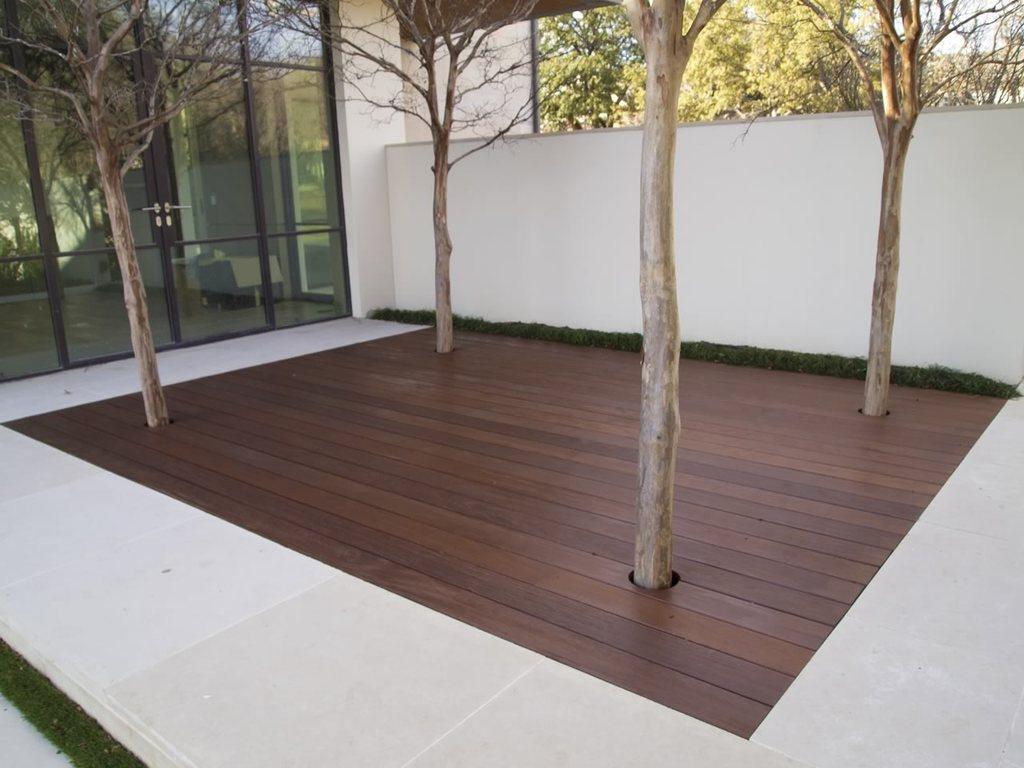
Best Decking Materials for the Dallas Metro Area
So you are thinking about building a deck in Dallas, Texas but you’re not sure what decking materials you should use? The Dallas-Fort Worth metroplex is the 4th largest metro area in the US. More than 7 million people call the 13 counties of this metro region home because the weather is beautiful all year-round. Enjoying that weather without leaving home is possible with a pool deck, patio deck or balcony deck. You can entertain, create a place to escape or use your deck to show off your backyard barbecue skills.

Ipe can add that extra sense of luxury you’re looking for.
No matter what type of deck you build, you need to choose the right materials. This means understanding what decking materials work best for your environment. A veteran deck builder with decades of experience crafting quality decks in the Dallas area knows the pros and cons for the popular woods and composites used to build decks that last, and that help you create memorable experiences.
This report helps you compare decking products. You will learn which are more expensive to build and those types of decking materials which require minimal maintenance. We will cover popular wood and composite decking manufacturers, and all other aspects you need to know to make an informed decision as to which decking material you should be using. If you know you want to have a deck built but don’t know what materials you should use for your particular situation, this guide will help you answer all your questions.
Listed below in no particular order are the most commonly used types of wood and composite decking materials in the Dallas metropolitan area. They provide varying degrees of functionality and durability, cover a wide range of price points, and can be used for many types of decks.
Common Natural Woods for Decking
Far and away the most common type of wood used to build a deck is Southern Yellow Pine or SYP. This wood is pressure treated (then called Pressure Treated Pine or PTP for short) to extend its natural resistance against rotting, decaying and insect infestation. Pressure treated pine, cedar and redwood are the most common natural woods used to build a deck in Dallas. Let’s take a look at each in turn, comparing and contrasting them according to features, durability and price points.

Pressure-treated pine decks makes are an excellent add-on for mobile homes.
Pressure treated pine is the most economical and found to be used in most decks in the United States for one simple reason–it is the least expensive decking material. Bear in mind that this only means initial construction and labor cost. It is easy to work with, has a plentiful supply, and can give you a good looking deck for 15 or 25 years (or longer) if properly maintained.
Pressure treated pine delivers the beauty of natural wood, but pressure treated pine decks will need the application of a good weather sealant and it will have to be periodically reapplied. Talk to a well seasoned deck builder as to what products will give you the best protection as well as when to apply them to your newly installed deck.
People build decks for different reasons. If you are on a budget and looking for a pool deck or want to build a surround for your hot tub, pressure treated lumber is recommended. When you keep a routine maintenance schedule it can give you years of enjoyment.
Remember that the upfront cost for pressure treated decking materials is very attractive, but ongoing maintenance, time and financial considerations are going to be a little greater than with other types of woods and composites like Trex decking and ipe (pronounced ee-pay) wood.
Cedar is considered a soft wood, but it nonetheless makes for beautiful, long-lasting decks. Cedar decking materials offer a distinctive color and hue, and there is no mistaking the luxurious smell of a cedar deck. You may fall in the love with cedar decking products because of the rich red coloring. If you’re looking for a beautiful deck, cedar can definitely deliver.

Cedar looks fantastic as a decking material, and it can last for years.
Cedar should be re-sealed every few years, and when proper maintenance practices are observed, you can still have a really attractive deck after 20 to 30 years. As opposed to other decking materials, cedar carries a middle-of-the-road price tag.
While Redwood has a natural resistance to rot, decay and boring insects it will still need maintenance. It will also give you a natural and beautiful deck. It works well in the Dallas metropolitan area and can be the centerpiece for great backyard entertaining experiences. Like cedar, redwood costs less than hardwoods and composites, man-made decking materials, and it can be less prone to warping over time than pressure treated wood. Like most natural woods it is best used when installed so that it has ample space between the deck and the ground. This allows for air to flow keeping the deck dry underneath and adds to the longevity.
You should also weather seal a redwood deck every few years to get the best possible performance. Since redwood is a softwood like cedar, it will be easier to scratch or stain than a hardwood or composite. Additionally, if older/inner tree growth is used to make your redwood decking materials, life expectancy is around 20 to 30 years (or longer) with regular maintenance.
To recap, pressure treated pine is always going to be your least expensive deck building choice at least upfront. Cedar and redwood will cost more to build than a PTP deck, while offering a more distinctive appearance and lasting a little longer. With any of these wood decking materials you are going to have to contribute regular time, money and elbow grease to keep them looking good and lasting as long as possible.
Composite Decking Material
Composite decking materials came about for a number of reasons. Sustainability is a real concern any time you build something using wood. A tree has to be grown and harvested to create wood decking materials. Composite decking products combine wood fibers, sawdust waste and recycling plastics. Because of this reason, they are environmentally friendly and the best composite decking materials last a long time with minimal maintenance.

Composite decks make for great rooftop decks.
However, the process for making composites is costly. This means that while your composite deck can often return several years of beauty and high quality performance with little maintenance, it is going to require a bit higher financial commitment in the construction phase. This is offset by lower annual maintenance costs and less time investment on your part year after year.
Build a composite deck and you get a uniform appearance from board to board. If you want a consistent look and a long-lasting deck, consider composites.
The manufacturer warranties you receive will in almost all cases be much more attractive than with pressure treated wood and other natural softwood products, and you won’t have to worry about splintering, cracking, splitting, deterioration or insects and other bugs eating your deck.
Composite decks can offer a high-end look, and this segment of the decking industry is one of the fastest growing currently. Trex is the market leader in composite decking, and Fiberon and Azek are other quality manufacturers.
The composite marketplace is evolving constantly, and Trex has become the industry leader because the company offers extreme durability with an environmentally friendly product that requires little maintenance while holding its appearance and functionality for decades. Trex offers an impressive 25 year warranty against fading and staining on residential decking products. This warranty also includes replacement due to defects in workmanship, and a guarantee that your boards will not splinter, rot or split. Additionally, you get a guarantee that Trex products are insect resistant and no structural damage will occur due to decay from fungal infection.

Trex decking is long-lasting, looks great, and requires less maintenance than other materials.
Build a Trex deck and you’re working with material that is made from 95% recycled materials. The Trex lineup receives the blessing of the US Forest Stewardship Council, and FSC approval means no decking material came from an endangered rain forest. The Trex lineup includes Select, Enhance and Transcends lineups, with the Transcends product being the top-of-the-line offering.
Azek Building Products makes decking materials which are backed by 30 year limited and limited lifetime warranties, depending on the product. The TimberTech line is also a part of the Azek family. Fiberon decking products also work well in the Dallas Fort Worth metro area, and are backed with a limited residential warranty that promises protection against splitting and decaying, rotting or splintering, and termite infestation. Fiberon also backs their products with a limited stain and fade warranty.
Bamboo: The Hot New Thing for Decks
When most people think of bamboo, they picture the slender bamboo stalks which grow to a height of 6 to 8 feet. Some bamboo can actually grow to a height of 80 feet and a width of 1 foot. Unlike decking materials made from wood, where the entire tree must be cut down, bamboo can be harvested without cutting the tree. Moso Bamboo is a decking material now available in the Dallas Metroplex, offering a 25 year limited warranty against rot, decay and insect infestation.
If you want a deck with a slightly different coloration than you get from natural softwoods and hardwoods, you may want to consider Moso Bamboo products. This is a green alternative to exotic hardwood decking material, but expect to pay more than other decking materials other than most tropical hardwoods.
Tropical Hardwoods: Beautiful, Exotic, and Luxurious
Exotic, tropical hardwoods include ipe, tigerwood, cumaru, Abaco, massaranduba and garapa. These extremely durable hardwoods are longer-lasting but also require a little maintenance. They can keep their color for decades with proper maintenance, and you can expect up to 50 years of beautiful high performance from an ipe deck when it is cared for properly.

Ipe is an excellent wood for poolside decks.
Ipe (also known by other names such as ironwood), cumaru and the other tropical hardwoods are incredibly dense. They are among the hardest woods used for building decking products, naturally resistant to rot and decay, insect infestation and boring as well as wearing well against the elements. All tropical hardwoods offer a very attractive longevity feature but will need maintenance. Tropical hardwood decks are like a fine exotic automobile and if they are within your budget this means they do require a financial investment where annual maintenance is concerned.
These woods are gorgeous, long-lasting, naturally resistant to mother nature and weather, and definitely at the high-end of the initial cost range when compared with other decking materials. However, when you want to build a deck that says elegance and quality, look no further than a hardwood like the gorgeous ipe.
Ipe carries the highest possible fire rating and is one of the hardest woods on the planet. Expecting decades from your beautiful ipe deck is not at all out of line, and the decking materials made from this wood have received the blessing of the Americans with Disabilities Act Requirements for safety because they are extremely slip-resistant, even when wet.
Ipe wood naturally resists fungus and mold, rot, decay and boring insects, without the need for the addition of any chemicals. The natural olive brown to reddish finish gives a look of luxury and class, and this wood is so durable it has been used at the Atlantic City Boardwalk, Disney World, the Coney Island Boardwalk and San Diego’s Shelter Island Marina.

Ipe provides excellent slip resistance on top of being beautiful.
If you select ipe or another tropical hardwood, you get one of the lowest cost-for-life decking products you can possibly choose. Your initial investment will usually be higher than if you select many other decking materials, but your ongoing upkeep and maintenance costs over time are much lower than those alternative decking products.
You should know that ipe wood offered by a responsible decking contractor is considered a “green” product. It carries the FSC seal of approval mentioned earlier as a wood that is harvested with sustainable and renewable practices. If you don’t mind paying more in the construction phase for your deck and a little every year for the next several decades for maintenance, a luxurious tropical hardwood like ipe adds instant status and high-quality class to any home.
Thermally Modified Wood
Natural wood can be modified through the application of a number of processes. One way to do this is to heat wood without the presence of oxygen, thereby making it more durable by changing its cellular structure. This thermal modification makes softer wood more durable and long-lasting, bakes the sugars and starches out of the wood making it insect resistant of which can be seen as an environmentally friendly by-product of this process. Since this wood lasts longer than it naturally does, fewer trees need to be harvested to make decking products.
These processes also make wood more resistant to mold. Thermally modified wood products are 50% to 75% less likely than their natural counterparts to swell or shrink in the presence of dramatically high or low temperatures. Some homeowners like the fact that attractive softwoods receive a darker color thanks to the thermal modification process. As with composite decking materials, there are a wide variety of colors and shades available.
Three of the top thermally modified would manufacturers are Kebony, Thermory and Cambia.
Choosing the Right Deck Material for the Dallas Metro Area
You just can’t beat pressure-treated pine if your biggest deck building consideration is your pocketbook. First-time homeowners and those with tight budgets are recommended to consider a pressure-treated deck for a lot of reasons. First off, the initial investment is lower than with any other type of deck build. If you have never had a deck before, this is a sensible and low-cost way to enjoy the experience.
If over time you realize that you are not spending that much time on your deck or you need to move out of your home, you have a minimal upfront investment. The slight downside to pressure-treated decks is maintenance. You should always sweep and otherwise clean any deck. In the case of a PT deck which is going to be subjected to the heat and humidity of the Dallas, Texas area, it is recommended that you stain your deck every few years.
The same is true if you choose to build a cedar or redwood deck. Redwood and cedar are going to set you back a little bit more initially than if you choose pressure-treated wood, and many people find them more attractive than a less expensive PT pine deck.
Consider a composite decking material like Trex if you are environmentally conscious. Since Trex materials are composed of 95% recycled plastics and wood fibers, you’re looking out for the environment and the planet because your decking material is made up of what would otherwise end up in a landfill. Trex decking products are backed with a 25-year warranty at least, they are resistant to rot and decay, insect boring and infestation, and you won’t begin to see gradual fading for more than 10 or 15 years.
Another benefit of Trex decking is that it doesn’t need to be stained, painted, sealed or finished. As you know, you should not expect that your softwood or hardwood decking boards will all have the same grain patterns, coloration and hue. If you are a stickler for uniformity, Trex will provide a better experience than natural wood. Trex decking materials come in a wide variety of colors and textures, and you receive long-lasting durability and low maintenance with an installation cost that is lower than tropical hardwoods but higher than softwoods like pressure-treated pine and cedar.
Thermally modified wood and bamboo make for interesting decking material choices. These are the newest decking innovations, and while they don’t have the track history of other alternatives, they seem to offer some attractive features.

Ipe decks also make a great solution for commercial properties because of their longevity.
Finally, if you want your deck to reflect class and luxury, you should definitely consider a tropical hardwood like ipe. This durable wood is made by mother nature to last for a extremely long time when compared to other decking materials. It will require annual maintenance such as any fine automobile.
Ipe wood carries the same fire rating as steel and concrete, and is easily the lowest cost-for-life decking choice. If you want to take your decking game to the next level and create an outdoor experience that will be the envy of the neighborhood while also reflecting your demand of excellence and class, you can’t go wrong with ipe. Also ipe if not weather treated annually will gradually change to a beautiful gray which is acceptable to many.
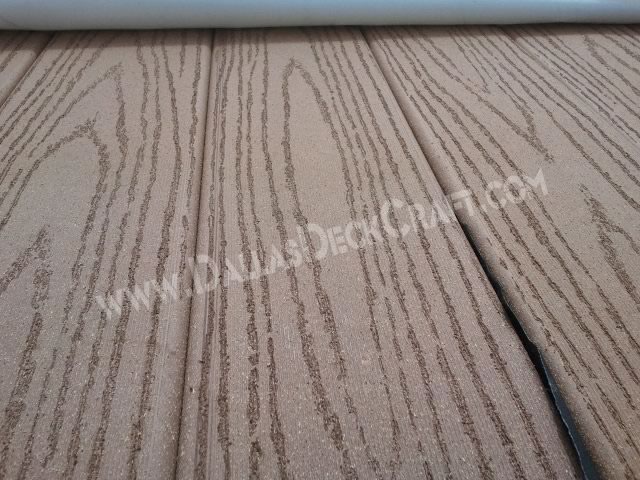
Building with Composite Decking: Is it a Smart Choice?
Composite Decking
As part of the building industry’s constant quest to make things better, more convenient and easier, composite decking was developed. There used to be just one option for decking—wood—but now there are a few choices available to suit any homeowner’s budget and preferences.
Wood decking needs regular maintenance and care, such as annual staining or refinishing, and this can be tedious for some people. Although there are kinds of wood decking materials such as ipe and other tropical hardwoods that require less maintenance, owning a wooden deck entails responsibilities.
Recognizing that a lot of homeowners might appreciate options that require less maintenance, some entrepreneurs came up with alternatives using materials such as aluminum, vinyl, and plastic. But the most popular option in the decking industry that has seen a lot of demand in the last decade is composite wood decking.
Also known as synthetic decking, wood-polymer composites and cheap composite decking, composite is quickly becoming the top decking material choice for many homeowners and builders.
Here are the reasons why:
- It is environmentally friendly
- Lightweight
- Stain resistant
- Insect/borer resistant
- Weather resistant
- Will not rot or splinter
- Very low maintenance
- Good workability and can be easily shaped
- Does not need paint or stain
What in the World is Composite Decking?
Wood composite decking is a man-made material made from combined materials such as wood and plastic. First introduced into the decking market in the early ’90s, these materials are processed to emulate the appearance of wood. The wood component of this combination typically consists of lumber byproducts such as wood fiber, sawdust and chips.
The plastic components are often made from both recycled and virgin thermoplastic materials that include ABS (Acrylonitrile Butadiene Styrene), PVC (Poly Vinyl Chloride) and PP (Polypropylene). During production, these components are added with preservatives and pigmentation, and then heated in high temperatures to thoroughly melt.
How do They Make it?
There are two major production methods that also affect the strength and quality of the composite decking.
The first process is called extrusion, wherein the raw materials are mixed and melted and then forced through an opening that has the shape and size of a decking board. This process solidifies the mixture into a finished product that has a consistent shape and size.
The other process is called compression molding, wherein the molten materials are combined and placed on a wood grain mold. The materials in the mold will then be compressed under extreme pressure and heat to create a strong physical bond. They are then formed into lengths simulating wooden boards while they are being cooled.
The finished product can have a beautiful, wood-like look, and they often come in a wide variety of grain patterns, colors and composite deck prices. This type of artificial wood decking can give a homeowner the freedom to build a deck without the maintenance, as composite decks don’t have to be sanded, painted or stained.
To Cap or Not to Cap
There are actually two types of composite or synthetic decking: capped composite and uncapped composite.
Uncapped
This is the first generation type of composite decking and is less expensive than the capped type. It never needs to be refinished or stained, nor does it splinter or twist. It is, however, more prone to stains and fading, so it has to be periodically cleaned to maintain its beauty. It is highly recommended that the surface be swept clean, soaped, scrubbed and hosed down every six months.
Capped
This is the next generation composite decking. It has a plastic surface that serves as protection of the wood fibers from being exposed to the elements. It also prevents the boards from fading and staining. Capped composite decking is not porous, which means that liquids will bead on the surface and will not easily dry so the surface tends to be slippery when wet.
How to Choose the Best Composite Decking
There are a few important factors that should be considered when choosing the best composite deck for your home. These include composite deck prices, color availability and type of fastener system used. You can also narrow down your search for the best product when you determine your desired deck texture, deck location and how you intend to use the deck.
There are a few big names in the composite decking market, such as Trex composite decking, Evergrain, Veranda Decking, CorrectDeck and TimberTech. The composite market is constantly evolving as manufacturers continue to develop their products to provide homeowners and builders with the best combination that will eliminate stain, mold and fading issues from wood composite decking.

Composite Decks
Composite Decking Questions Answered
Have you considered composite decking before but disregarded the option because you did not know enough about it? Have you wondered how is it made and what is it made of?
You are in the right place! Here your questions regarding composite decks will be answered, and more. Composite decking has been around for decades, but there still seems a lack of familiarity with it. So let’s start off with the basics and look at the material a little closer.
What is Composite Decking?
Composite decking is a pseudo-wood product created from a mixture of recycled plastics and wood fibers. Color pigments and protective additives are incorporated into the mixture to form a traditional wood-like deck board but with added resilience that requires less maintenance than other decking materials.
There are several polymers used in manufacturing composite decking such as polyvinyl chloride, high-density or low-density polyethylene, and polypropylene.
Wood flour is then added to stabilize the plastics and also protect it from ultraviolet rays that may damage the plastics. Choose a brand that uses finely ground wood fiber as the consistency allows for a more uniformed look throughout the deck.
How is Composite Decking Made?
Most new generation composite decking products are manufactured using “extrusion,” a forming process wherein the melted mixture of wood and plastic are forced through an opening or a mold to produce boards that have consistent shape and size. It’s just like putty pushed through a mold.
Another popular manufacturing method used for modern composite decking is “compression molding.” The melted plastic and wood materials are placed in molds which are then compressed in extreme pressure and heat levels so that a strong physical bond is created.
The pressure squeezes out air pockets that might weaken the product and a highly compressed board is created.
What are the Benefits of Composite Decking?
We have a comparative review that discusses the benefits of composite decking vs. wood decking. But let’s talk about some of the benefits of composite decks when used for outdoor living.
Weather Resistance
Because of its density, composite decking has a high resistance to decay and rot caused by constant or prolonged exposure to the elements, especially moisture. And because there is less moisture in the boards the possibility of mildew, bacteria and insects are also reduced.
Durable
Composite deck boards are made to be resistant against stain such as food and beverage stains. You won’t have to worry about mustard, barbecue sauce, coffee and wine seeping through your decking. Cleanup is also easy. Because it is resistant to stains, the life and beauty of your deck is preserved.
Ultra-Low Maintenance
You won’t have to spend more just to have a long-lasting deck. Composite decking does not need stain, sealers or paint, so expenses for maintenance is greatly reduced. You just need to keep it clean by sweeping or mopping, remove stains with composite deck cleaners available commercially, and hose it off twice a year for general cleaning.
Complementary Colors
Many composite decking brands offer boards in a wide range of colors to complement any home. You won’t need to paint or stain the product because the boards already come in different beautiful colors to choose from.
Ten years ago, there were only about 10 choices when it comes to types and composite decking colors. But as the industry has grown over the last few years, more and more choices have become available. In fact, there are now over 50 composite decking products in the market.
Your Ultimate Composite Decking Resource
Knowing more about any product before you buy will greatly help in making an informed decision, and will significantly reduce stress and future regrets.
Sometimes we miss buying what’s best for us because we lack knowledge of it. So don’t be afraid to explore and don’t avoid composite decking just because you are not familiar with it.
Read on and find out more about the ins and outs of this product and get your information first-hand from Dallas Deck Craft, the decking experts serving the Texas counties of Dallas, Collin and Rockwall since 1980.
With more than 30 years of deck building experience, we share valuable insights that will help you with your deck building needs, not only on composite decking, but on many other decking materials as well.

Wood Deck vs Composite Deck – Which is Better?
If you’ve decided to have a wood deck installed in your backyard, chances are you’ve been surprised at just how many different options there are for the type of wood decking you can use.
Recent years have seen some positive developments in the quality of a composite deck and a plastic deck—but are they really better than the real thing?
Common Types of Wood Decks
To give you an idea of what we’ll be comparing against, let’s take a few minutes and discuss some of the more common types of wood decks used in residential projects.
Redwood Deck
Popular on the west coast but used country-wide, redwood is known for its longevity and beauty.
Although when it comes in contact with moisture or even concrete it can create a deteriorating process so it is recommended to use pressure-treated material for framing and support. If properly maintained by keeping a good weather sealant/stain it can last for many years.
Cedar Decking
Cedar is standard species used for many kinds of decking and construction projects. It has many of the same characteristics Redwood and as such needs the pressure-treated pine for the framing as well as the weather sealant.
Tropical Hardwood Decking
Ipe, tigerwood decking and red balau woods, from the tropical regions of Southeast Asia and Brazil, have become popular in recent years due to their extreme durability and density and are a great choice for a deck.
The tropical hardwoods probably have the best longevity of all woods. With the heavy density weather sealant is not required unless you don’t mind reapplying about every six months. Relatively affordable considering these types of wood are imported.
Pressure-Treated Wood Deck
Probably one of the most affordable, this type of wood has been treated with a chemical preservative to stave off rot, fungi, and pests and therefore has a great longevity.
You must maintain a good weather sealant/stain applied as needed to keep the appearance up on a pressure-treated deck. It also helps to minimize warping as well as checking.
Wood Decking vs. Composite Decks
There was once a time when any serious homeowner or contractor would shy away from composite decking—however, composite decking has made substantial improvements over the past few years, resulting in less fungal buildup, much slower decomposition, more longevity as well as a reduction in price.
Composite wood is made up of wood particles and plastic. The plastic is usually polyethylene, and may or may not be recycled, depending on the manufacturer. Certain brands of composite deck boards are hollow and therefore understandably cheaper but are generally not as strong or sturdy as solid composite boards.
Another consideration is that composite wood can get quite hot if the temperature outdoor gets high enough—as it does here in Dallas, Texas due to the plastic components of the material retaining heat. This heat can be lessened to some degree by the color of the composite wood.
The lighter the wood color the less heat it will retain. It’s still doubtful that anyone would want to walk around barefoot on a composite deck in the middle of August.
Composite decking performs quite well in very humid areas, of which there are a few in our region. The plastic isn’t quite as prone to the absorption of moisture as 100% wooden decking which can possibly lead to a longer lifespan.
Wood Decking vs. Plastic Decking
Plastic decking has been touted as being low or maintenance free—however, this isn’t necessarily true. As both composite and plastic decking will require a good cleaning at least once a year in order to prevent color fading.
Technically the deck would likely remain functional, but it sure wouldn’t be pretty if left unmaintained. Recent technology in the formula used for plastic or otherwise known as PVC has minimized the effects the sun can have on this material.
Cost of Wooden Decking vs. A Composite Deck
The cost of decking, either wood or composite varies quite a bit depending on the quality, brand, grade and type, but it’s safe to say that in most cases, composite materials are not necessarily cheaper than “real” woods. In the low to middle end of the spectrum, composite woods might be a little higher.
To give you an example of the price variances, a pressure-treated wood deck might cost as little as $10 per square foot, whereas a very high-end composite deck could run upwards of $40 per square foot. Ultimately, which material you choose for your decking will depend on preference and budget.
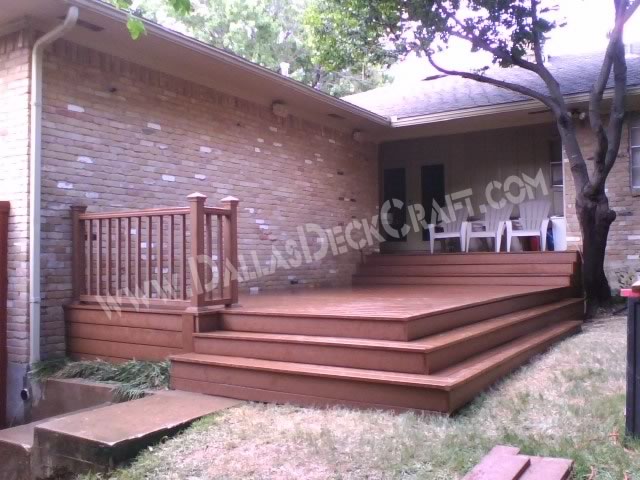
A Brief Overview of the Benefits of Composite Decking
In the past decade or so, advancements have significantly improved the quality of composite decking, yielding a material that is stronger, longer-lasting, and less prone to warping, deterioration, and other common problems associated with outdoor wooden construction.
How is Composite Decking Made?
Composite decking is generally made from the combination of wood and plastic (hence composite). The wood is usually sourced from lumber byproducts such as wood chips, fibers, and sawdust. The plastics used are often recycled polyethylenes (but not always—you’ll have to confirm with the product manufacturer).
Producers of composite decking take the wood and the plastic products and heat them up, at which point coloring and a preservative agent are added to the “wood soup.” Finally, the mixture is poured into casts to form boards. Once it hardens, the composite decking is ready to be shipped to your local supplier.
The Best Uses for Composite Decking
Composite decking has become a popular choice for outdoor decks as a result of its durability and resistance to weathering. Composite woods are also more resistant to moisture, making them a great choice for humid areas or as decking for above ground pools.
There are two kinds of composite decking: hollow and solid. Hollow decking isn’t as popular as solid decking, as it tends to look less realistic and isn’t as sturdy as its counterpart, but it does carry the benefit of being less prone to temperature and moisture related expansion and contraction.
Solid composite decking can contract and expand more, but is generally more durable and strong. Which type you choose is largely dependent upon the intended use of the deck and the temperature conditions where you live.
The aesthetic appeal of composite wood has also substantially improved over the years—while a trained eye might still be able to spot it, as it’s not a perfect 1:1 replica of “real” wood, composite wood can often look very natural and pleasing.
A wide variety of grains, colors, and other options are available to homeowners—matching composite wood to the already-existing wood in your home is generally a fairly easy process.
Most composite decking comes with a fairly long warranty—as this material is designed to last quite a long time—but homeowners should be aware that in order to take advantage of the warranty, the deck has to be built according to the manufacturers directions.
Hiring a professional deck builder ensures that your warranty will be valid for years to come.
Composite wood can also be used for parts of your outdoor deck other than the deck itself; for example, suppose you had your deck built out of Trex composite decking. Trex also makes railing out of composite wood, meaning that your entire project can remain uniform.
As a final note, composite decking does require maintenance, though this maintenance is generally considered a bit less intensive than natural wood requires. Typically, composite decking must be cleaned at least once per year.
Composite Decking Prices
In addition to its improvements over the past few years, the cost of composite decking has also become much more affordable.
However, a common misconception is that composite decking is significantly cheaper than “real” wood—while this can be true, it isn’t always the case. Just like natural woods, the price of composite decking will vary based on quality and type.
Whether you decide to build your deck using composite decking or natural wood decking, you can expect to find prices similar to each other which offer different benefits—therefore, the smart move will be to base your purchase on the intended use of the deck (e.g., an above ground pool deck may benefit from composite wood’s resistance to moisture).
